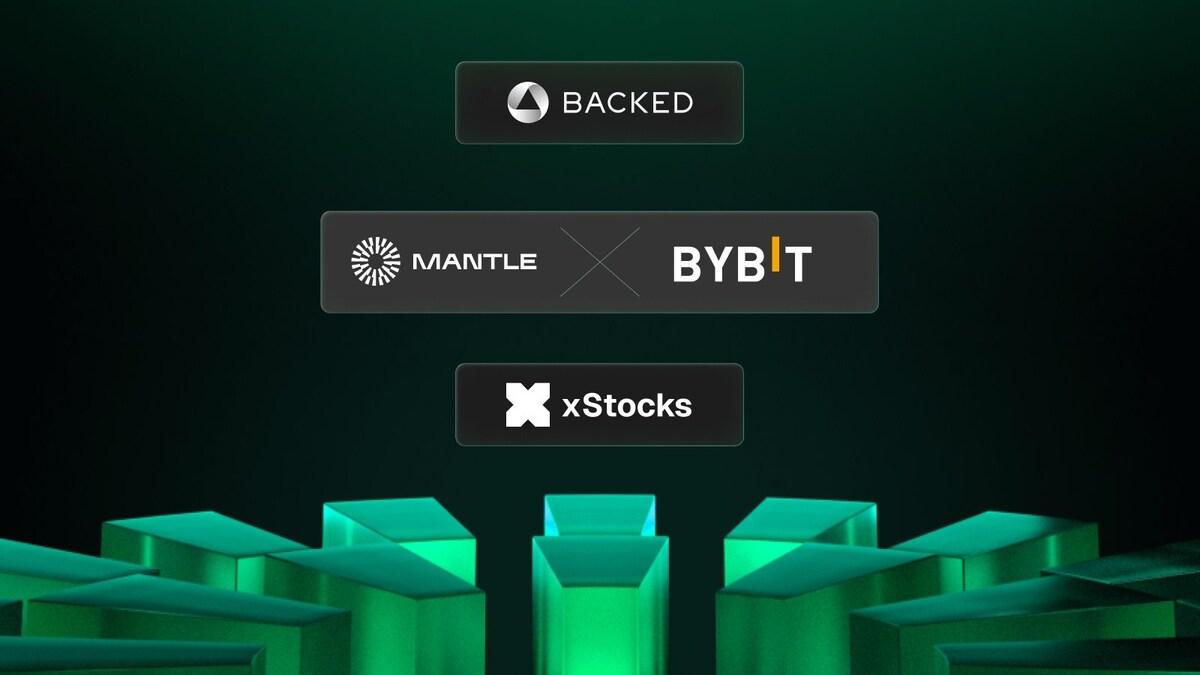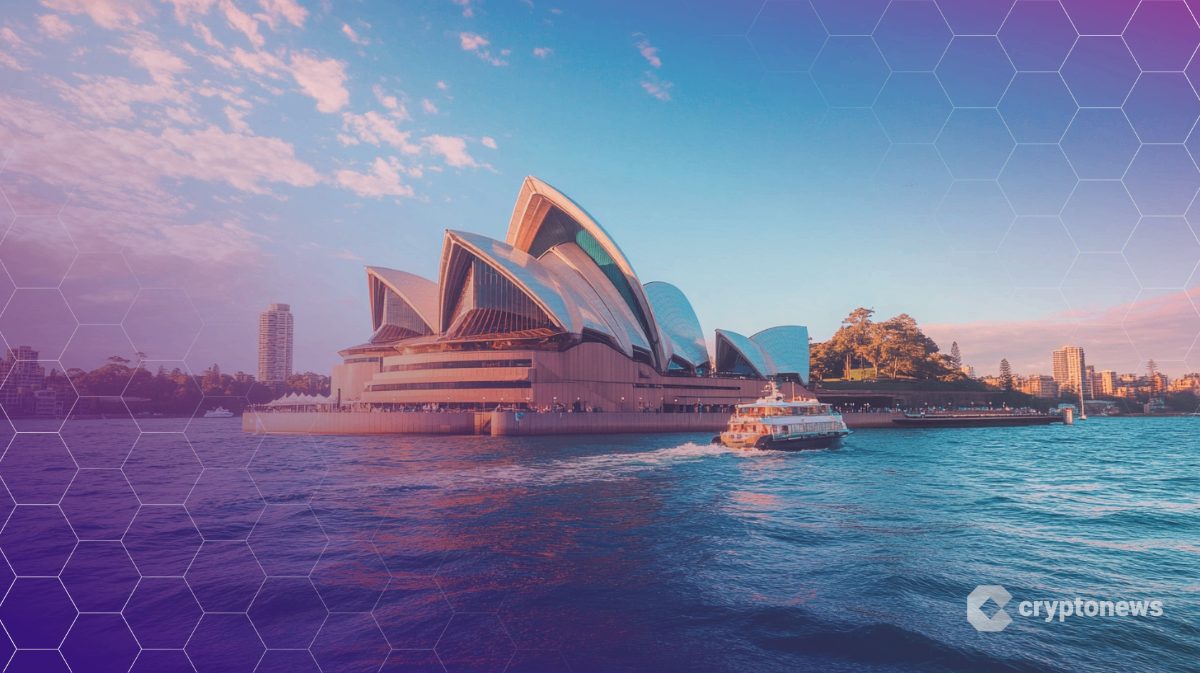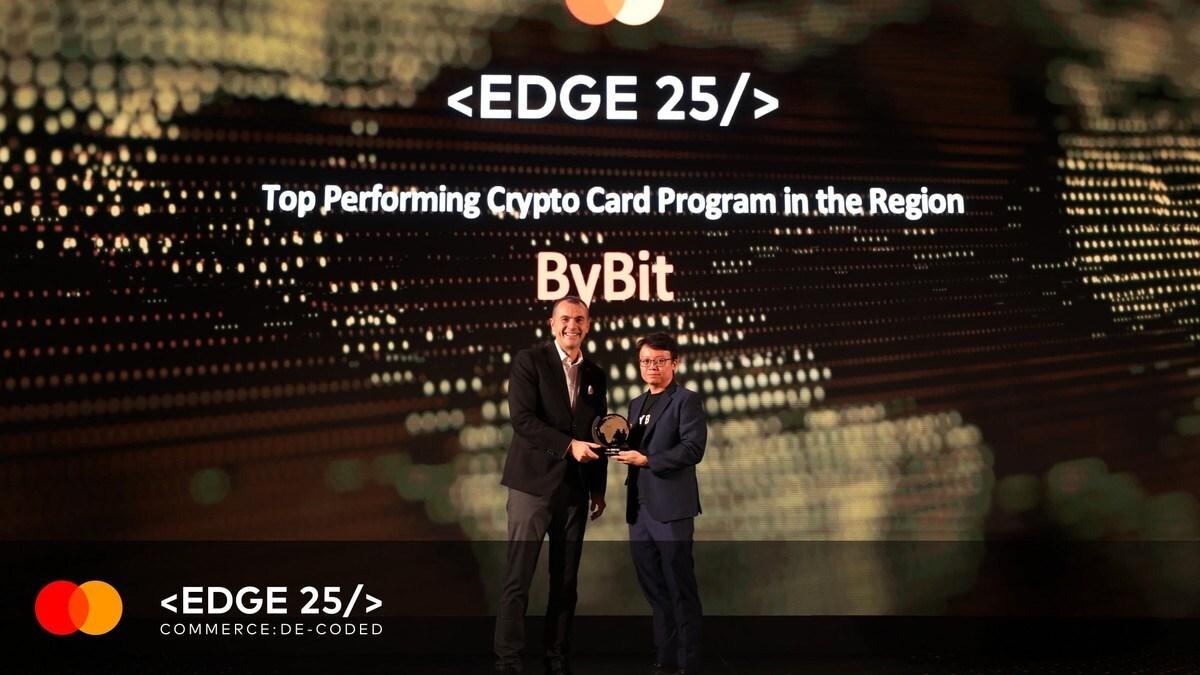The year 2035 is not merely another date on the calendar; it is the inflection point where the promises of blockchain, Artificial Intelligence, and immersive digital environments fully converge with traditional finance. We are moving beyond simple digital transactions and towards a programmable, transparent, and hyper-personalized global economic system. The questions are no longer if this change will happen, but how it will be governed, who will control the rails, and how ordinary consumers can learn to trust the intelligent systems managing their wealth. To explore this future, we spoke with pioneers from the crypto and FinTech space, including Monty C. M. Metzger, CEO & Founder at LCX.com and TOTO Total Tokenization; Griffin Ardern, Head of BloFin Research and Options Desk; Kevin Lee, CBO of Gate; Vivien Lin, Chief Product Officer & Head of BingX Labs; Federico Variola, CEO of Phemex; Bernie Blume, Founder and CEO of Xandeum, and Vugar from Bitget. Their consensus? The future isn’t about one technology winning, but about the intelligent infrastructure that unifies competing models. The War for the Digital Wallet: CBDCs vs. Decentralization The foundational battleground for the future of finance is the payment rail itself. Will the world be governed by state-controlled Central Bank Digital Currencies (CBDCs), or will decentralized, private systems, such as stablecoins and the Lightning Network, win the race for global payments and cross-border settlement? The industry consensus strongly suggests that this will not be a zero-sum game. Coexistence and interoperability will be the defining theme of 2035. “By 2035, I don’t believe the world will pick one side, CBDCs and decentralized payment systems will coexist,” states Federico Variola, CEO of Phemex. He outlines the strategic division: “Governments will favor CBDCs to maintain oversight and monetary stability, while open networks like stablecoins and Lightning will thrive in borderless, retail, and Web3-driven economies.” This strategic coexistence is viewed not as a truce, but as a necessary duality. Monty C. M. Metzger of LCX emphasizes the inevitability of both models: “The world won’t choose between CBDCs and decentralized payment systems, it will use both,” he confirms. Metzger continues: “By 2035, we’ll see hundreds of large-scale stablecoins operating under frameworks like the Genius Act, alongside Central Bank Digital Currencies providing monetary stability. But the real transformation will come from the systems that connect them. The world urgently needs a global stablecoin settlement hub, a vision LCX outlined back in 2018. The future of finance isn’t about one model winning — it’s about building the intelligent infrastructure that unites them.” The Critical Role of Stablecoins While CBDCs offer the promise of sovereign monetary stability in a digital format, stablecoins and private payment systems hold significant structural advantages in terms of adoption and speed, particularly in high-volume, cross-border commerce. Griffin Ardern, Head of BloFin Research and Options Desk, argues that stablecoins are likely to become the dominant force in cross-border transactions: “The reason is simple: first movers often enjoy a significant advantage in payment methods, as user habits and infrastructure align with them,” Ardern notes. He suggests that the cost of promoting and implementing CBDCs may ultimately be higher than the regulatory compliance costs for existing, established stablecoins. Furthermore, Ardern highlights a geopolitical constraint on state-backed digital currencies: “In an era of deglobalisation, CBDCs are often subject to restrictions in the name of ‘national security,’ meaning their widespread adoption will inevitably be lower than that of less restrictive and more versatile stablecoins.” The prevailing model will ultimately be determined by trust and seamless function. As Variola points out, if CBDCs remain closed and restrictive, users will naturally migrate toward open, censorship-resistant alternatives. The final piece of the puzzle, according to Metzger, is the unifying infrastructure that connects these competing rails. “The real transformation will come from the systems that connect them. The world urgently needs a global stablecoin settlement hub, a vision LCX outlined back in 2018. The future of finance isn’t about one model winning, it’s about building the intelligent infrastructure that unites them.” In essence, 2035 will see CBDCs anchoring the stable, regulated core of domestic finance, while stablecoins and decentralized networks serve as the dynamic, efficient engine for global, real-time commerce, all linked by sophisticated settlement layers. AI, Trust, and the Hyper-Personalized Financial Life If the payment rails are the skeleton of the future financial system, then Artificial Intelligence (AI), including Generative AI and Quantum-AI, is the brain. By 2035, AI promises to dissolve generic financial advice, replacing it with services so tailored they feel like having a personal CFO in your pocket. Monty C. M. Metzger eloquently summarizes this paradigm shift: “Money won’t just move, it will think,” a quote I just said on stage at the Fintech Forward Conference hosted by the Economic Development Board and The Economist in Bahrain. He continues: “By 2035, Artificial Intelligence and Quantum-AI will transform finance into a living, learning system, offering hyper-personalized wealth strategies, adaptive lending, and intelligent asset management in real time.” This level of intelligence means that investment strategies will adapt daily to global events, lending terms will be dynamically set based on real-time financial health, and savings plans will adjust seamlessly to personal behavioral patterns. Vivien Lin, Chief Product Officer & Head of BingX Labs, confirms this trajectory: “AI will absolutely enable hyper-personalized financial services, from tailored investment strategies to customized lending and savings plans. It’s a natural evolution of data-driven finance.” The Trust Barrier: From Algorithm to Advisor However, the leap from using AI for basic data analysis to trusting it with multi-generational wealth is a significant psychological and regulatory hurdle. For consumers to hand over control to an algorithm, the industry must establish a new foundation of accountability and transparency. Lin identifies the crucial measures necessary to build consumer trust: “The challenge is ensuring users can trust these systems. That means keeping humans in the loop, being transparent about how recommendations are made, and enforcing strong data privacy standards. Users should always understand, control, and override what AI does on their behalf, that balance of intelligence and accountability will define true trust.” The future of AI in finance hinges on establishing a clear “Right to Explanation.” Consumers must move past the “black box” problem and understand the logic behind an AI’s debt recommendation or investment allocation. This requires a regulatory framework that mandates auditability and human oversight, ensuring that the AI acts as a fiduciary, not just a suggestion engine. Vugar from Bitget emphasizes that AI must be more than just predictive, it must be empowering. He says: “By 2035, the key challenge in AI finance won’t be generating returns, but ensuring the consumer feels they are still in control. True adoption hinges on decentralized AI governance where users can audit the algorithms that manage their funds. AI must evolve from a sophisticated tool into a transparent, trustless fiduciary. Without decentralized assurance, hyper-personalization simply translates to hyper-risk for the user.” By 2035, the most valuable financial institutions won’t just be those with the best AI, but those with the highest level of verifiable trust in their intelligent systems. The Regulatory Maze: Fragmented Rules and Strategic Compliance The simultaneous rise of crypto-assets, AI, and complex data privacy requirements has created a tripartite challenge for global regulators. The question is whether 2035 will bring the harmonious, single global rulebook that market participants crave, or if companies will be forced to navigate a patchwork of competing jurisdictions. The consensus from the industry leaders is that harmonization will not be complete by 2035. Monty C. M. Metzger of LCX is explicit about the continued fragmentation: “By 2035 we won’t have a single global rulebook, we’ll have a multi-fragmented regulatory landscape.” He explains that while new frameworks are being introduced across every major region (MiCA in Europe, new clarity in the US, regulations in Asia), “true harmonization will only happen much later, if at all.” This fragmented landscape presents a unique challenge and a powerful opportunity for companies operating on the global stage. “For new companies, catching up will be complex and expensive,” Metzger warns. He posits that the advantage will go to pioneers who adopted a regulation-first approach from the beginning: “Pioneers with a regulation-first approach, like LCX, will hold an unfair advantage, able to navigate overlapping regimes for crypto, AI, and data privacy while others struggle to adapt. The winners will be those who treat regulation as strategy, not as an obstacle.” From Competition to Deep Collaboration In the absence of a unified rulebook, the nature of institutional cooperation becomes the dominant factor. Will major financial players engage in pure competition, or will the demands of global commerce push for deep collaboration, exemplified by concepts like Open Banking 3.0 and Embedded Finance? The trajectory suggests that the market will force cooperation. The seamlessness demanded by hyper-personalized services and real-time global settlement requires data and value to flow freely across traditional institutional silos. This moves the industry toward a model where financial services are “embedded” directly into non-financial environments (e.g., buying insurance when booking a flight, or getting a loan at the point of sale for a digital asset). This Embedded Finance ecosystem necessitates not just data sharing (Open Banking 2.0), but shared infrastructure and regulatory compliance (Open Banking 3.0), pressuring even fragmented regulators to find common ground on core principles like data standardization and identity management. By 2035, institutional cooperation will be defined by strategic alliances aimed at providing the most seamless, compliant global customer experience possible, using regulation not as a barrier, but as a framework for trusted market entry. The Tokenized World: Primary Ownership and Immersive Finance The final pillar of the 2035 FinTech landscape is the tokenization of everything. The creation of a digital, programmable receipt of ownership for real-world assets (RWAs) real estate, equities, bonds, art, and commodities, is arguably the most profound restructuring of global markets since the invention of the stock exchange. Tokenization promises to fundamentally transform ownership by unlocking programmability, fractional ownership, instant settlement, and global liquidity in ways traditional markets simply cannot match. Monty C. M. Metzger sees tokenization becoming a primary issuance and settlement rail for a vast range of assets: “By 2035, tokenization will become a primary issuance and settlement rail for a broad range of assets — from equities and bonds to commodities and real-world assets. It will unlock programmability, fractional ownership, instant settlement, and global liquidity in ways traditional markets can’t match.” He continues: “Now, let’s be clear — this is not a small task. The global commodities market alone is worth tens of trillions of dollars, covering everything from gold and copper to oil and energy. Bringing that scale of value on-chain requires billions in collateral reserves on the blockchain and crypto powered settlement infrastructure. “It’s a fundamental restructuring of global trade. The challenge is immense, but so is the opportunity: to create a financial system where commodities and capital can move as seamlessly and transparently as data on the internet” This transformative trend is echoed by other industry leaders. Bernie Blume, Founder and CEO of Xandeum, underscores the long-term inevitability of this shift: “The tokenization of traditional assets like real estate and equities is a mega-trend that will fundamentally change everything. While it’s not happening overnight, the trajectory is clear and moving in the right direction daily.” “I believe everything with public records, such as real estate and even vehicle titles, will inevitably move on-chain. Watch this trend over the next decade; it represents the future of capital markets.” The scale of this shift is staggering. Kevin Lee, CBO of Gate, provides specific projections for market penetration: “At Gate, we’re witnessing this inflection point firsthand. The infrastructure race won’t be won by whoever has the flashiest technology, but by the exchanges that evolve into global gateways for institutional-grade tokenized asset trading.” “By 2035, we expect centralized and decentralized exchanges to handle over 70% of all primary and secondary tokenized transactions, effectively becoming the new brokerage houses of the digital economy.” Lee notes that the payment rails of 2035 won’t be winner-take-all; they’ll be interoperable ecosystems where stablecoins, CBDCs, and tokenized deposits coexist. Stablecoins are already processing transaction volumes exceeding Visa and Mastercard combined at $27 trillion annually, with projections reaching $100 trillion by 2030 at 50x velocity. Gate is building for this multi-rail future, where cross-border efficiency through stablecoins complements domestic CBDC stability, unified by intelligent settlement infrastructure. Platforms that bridge these competing models, rather than those betting on a single winner, will ultimately capture the largest share of the market. The Bridge to Immersive Finance Tokenization provides the backend infrastructure for this new ownership model, while immersive digital environments Metaverse and Augmented Reality (AR), provide the front-end access and service delivery. Vivien Lin of BingX Labs explains how the user experience will evolve: “We’re already seeing billions of dollars’ worth of assets moving on-chain, and tokenization will likely become a standard form of ownership in the coming years… However, to reach mass adoption, the front-end experience must stay simple, most users shouldn’t even need to know they’re interacting with blockchain.” As immersive environments mature, they will serve as intuitive, graphical gateways to financial services. Imagine standing in an AR environment and seeing the real-time, tokenized value of your property portfolio overlaid on a physical map, or accessing instant, fractional equity in a new bond issue through a secure, virtual private banking portal. Vugar from Bitget highlights the role of exchanges in bringing tokenization from concept to commercial reality. He continues: “The primary barrier to widespread RWA tokenization is not legal, but the fragmentation of liquidity. Exchanges must evolve to become the global gateways for tokenized assets, providing the seamless infrastructure necessary for institutional-grade trading and fractional ownership.” “We project that by 2035, centralized and decentralized exchanges will facilitate over 70% of all primary and secondary tokenized asset transactions, effectively replacing traditional brokerage houses for the digital economy.” Lin emphasizes the seamless nature of this future: “As immersive environments like AR and the Metaverse mature, they’ll serve as intuitive gateways to financial services, making complex systems feel seamless and familiar.” This confluence of tokenized assets and immersive interfaces will democratize access to sophisticated financial services, making institutional-grade products available to a global retail base through intuitive digital platforms. Metzger stresses the immense challenge inherent in this restructuring of global trade, particularly concerning commodities: “The global commodities market alone is worth tens of trillions of dollars… Bringing that scale of value on-chain requires billions in collateral reserves on the blockchain and crypto powered settlement infrastructure. It’s a fundamental restructuring of global trade.” The ultimate opportunity, he concludes, is immense: “to create a financial system where commodities and capital can move as seamlessly and transparently as data on the internet.” Conclusion: The Unified Future of FinTech The journey to 2035 is not a single path but the convergence of four major technological currents. Payment Rails: The dominant model will be coexistence, with stablecoins dominating cross-border efficiency and CBDCs providing domestic stability, unified by interoperability hubs. Intelligence: AI will lead to hyper-personalized finance, but its success hinges on regulatory measures that enforce transparency, auditability, and human-in-the-loop accountability to build essential consumer trust. Regulation: The landscape will remain multi-fragmented, forcing institutions to adopt a “regulation as strategy” approach and driving deep collaboration through Embedded Finance and Open Banking 3.0 models. Ownership: Tokenization will become a primary issuance and settlement rail for $30+ trillion in assets, with immersive digital environments serving as the intuitive, seamless interface for global access and management. The future of finance, as defined by the leaders of this transformation, is not about the disruption of the old by the new, but the intelligent integration of state stability with decentralized efficiency, and the merging of physical assets with their programmable, digital forms. 2035 will be the year finance becomes truly programmable, globally accessible, and inherently intelligent. The post Exploring Tomorrow: Global FinTech in 2035 appeared first on BeInCrypto.

More Headlines

Mantle Collaborates with Bybit and Backed to Bring U.S. Equities Onchain, Pioneering Next Trillion-Dollar Wave of Tokenized Assets
TheBitCoinNews

Bybit Secures UAE’s First Virtual Asset Platform Operator License from Securities and Commodities Authority
TheBitCoinNews

Australia Risks Being “Left Behind” as Tokenization Transforms Global Markets – ASIC
CryptoNews.com

What is SOON Crypto? SOON Price Skyrockets +337% – Here’s Why and is $2 Locked In?
99bitcoins

Bybit Card Honored as “the Best Performing Crypto Card” by Mastercard at EDGE 2025
TheBitCoinNews

Collaboration across Bybit, DigiFT and UBS uMINT expands Collateral Solution for Institutions
TheBitCoinNews
